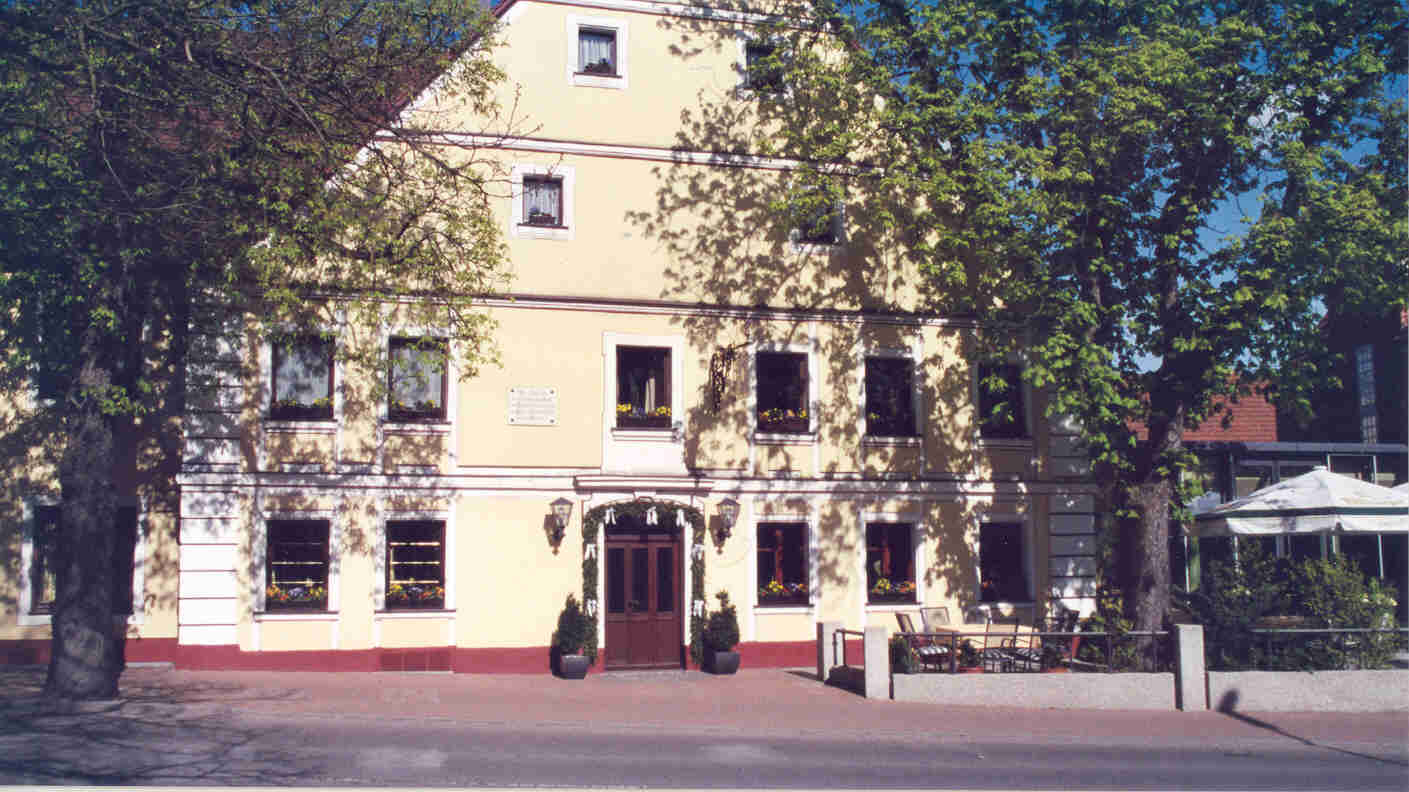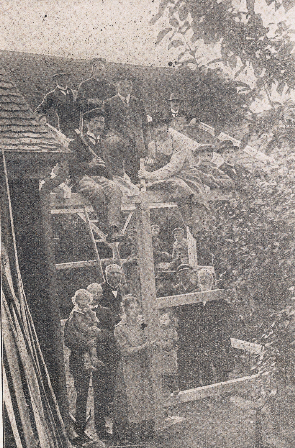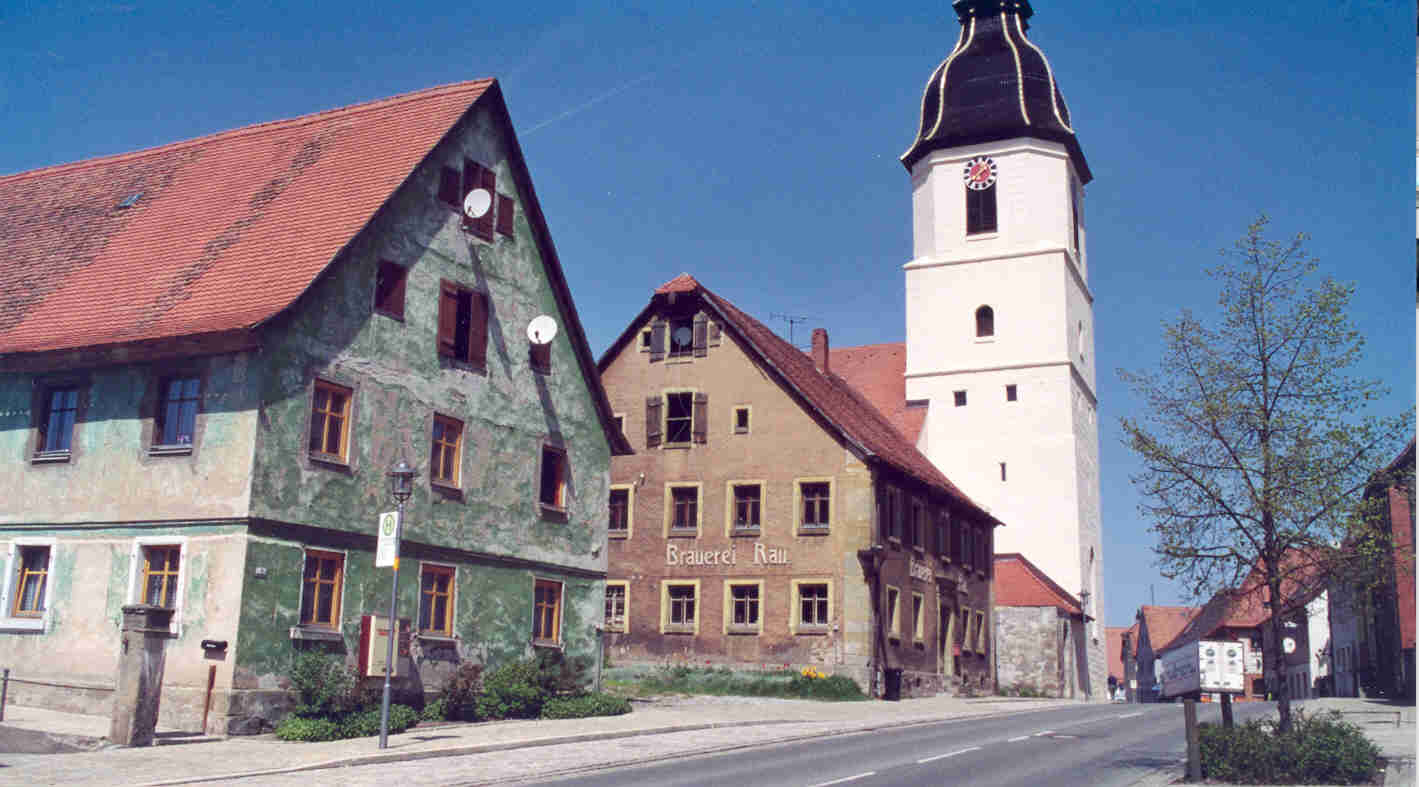Neuendettelsau Mission Society (1841)
The Neuendettelsau mission society near Nürnberg in Bavaria became very influential in mission activities in New Guinea as soon as Germany claimed that territory, alongside the Rhenish and Steyler mission societies. The key figure in that involvement was Rev. Johann Flierl who also founded Elim mission at Cape Bedford, later conducted by Rev. Schwarz. Other luminaries from Neuendettelsau were Rev. Carl F. Th. Strehlow of Finke River and Hermannsburg, and Rev. Paul Löhe, a founder of the United Evangelical Lutheran Church of Australia in 1921 and its theological seminary in Adelaide in 1923.
German Lutherans in the United States
The Neuendettelsau mission college emerged in the 1840s, during virulent times in Germany with a failed revolution in 1848, soon to be followed by the pull of gold rushes overseas. A number of similar institutions already existed at Basel (1815), Berlin (1824) Barmen (1825), and Hamburg (1836), but the Bavarian college was initially closely orientated around the personality of its founder Rev. Wilhelm Löhe, much like the Gossner mission started in Berlin a few years earlier (1836) and the Hermannsburg mission society which followed hard on its heels (1849). It started in 1841 as a preparatory course for assistant preachers to be sent to the Lutheran German communities in the United States, but did not become formalised until 1853.
Its founder Pastor Wilhelm Löhe became involved in establishing Franconian colonies in Michigan in the 1840s(Frankenmut, Frankentrost, Frankenlust, Frankenhilf), with a teachers’ seminary in Sagiwa city, the first Protestant teacher seminary in the United States. These colonists were also meant minister to the native Americans, and established a mission called Bethanien, but its leading figure left for the east Indies in 1853 and the mission collapsed.
The first two candidates trained at Neuendettelsau answered a call for assistants from the Ohio Synod in Fort Wayne, others were sent to Michigan. Finding neither the Michigan nor the Ohio synods sufficiently grounded in Lutheran confessionalism, the Neuendettelsauers formed the Missouri Synod in 1845 and set up a new preachers’ seminary at Fort Wayne in 1846, when their number was swelled with a group migration of 11 candidates.
| Hotel Sonne, the first accommodation of the Neuendettelsau training institute |
 |
| Source: R. Ganter |
Initially the preparation at Neuendettelsau needed therefore only be sufficient to qualify candidates to enter into these teachers’ or the preachers’ seminaries. The Neuendettelsau college emerged gradually from informal arrangements where teaching of religion, German and mathematics took place in the local Gasthaus (pub) and the first two candidates were accommodated by the proprietor of the Hotel Sonne, Mr Ottmann. Some received training from pastors in Nürnberg and Auernheim. In this way 57 candidates prepared themselves for the seminaries at Fort Wayne and St. Louis by 1853.
Löhe started to publish the newsletter Kirchliche Mitteilungen in 1843, and in 1849 formed the ‘Gesellschaft für Innere Mission im Sinne der lutherischen Kirche’ whose name (society for inner mission according to the Lutheran church) flagged the narrow confessional bandwidth of his faith in confessionial Lutheranism, although his closest collaborator Pastor Friedrich Bauer, had more pietist leanings influenced by Halle. Löhe had received his theological training in Erlangen and Berlin.
| The first purpose-built mission institute at Neuendettelsau |
| Source: Lutheran Archives Australia |
Confessional differences forced the relocation of Löhe’s teachers’ college from Saginaw city to Dubuque where the Iowa synod was formed in 1853, again with the participation of Neuendettelsau candidates under the general direction of Löhe. They established a mision on the Powder River in the Rocky Mountains, which was violently repelled by the First People. These developments gave the impetus for a formalisation of training at Neuendettelsau, although the first dedicated college building in Neuendettelsau was not completed until 1867. In 1854 Löhe added a seminary for deaconesses.
The college trained mostly Bavarians (332 of 512 candidates up to 1913 were Bavarians), and most of them were sent to the United States (218 of 253 up to 1886), where they became concentrated in the Iowa Synod (115 by 1924). [1] Although it was called a missionary training college, its focus was on ‘inner mission’, directed at migrant communities.
From 1875 the college collaborated also with the Immanuel Synod in South Australia, and from 1898 with Brasil, where its candidates also formed a new synod. It was the South Australian involvement that gradually changed the seminary into one orientated towards heathen mission, particularly in New Guinea.
Neuendettelsauers in Australia
The very first Neuendettelsau candidate sent to Australia was Johnann Friedrich Meischel who was received in Adelaide in October 1860. In July 1874 the Langmeil pastors Johann Christian Auricht and G. J. Rechner sent an urgent request for more German pastors to Neuendettelsau, followed in April 1875 by a second request, hand-delivered to the Neuendettelsau direction by Pastor Herlitz. This was answered with Johann Stolz from Rothenburg, who departed for South Australia in November 1875. He died in 1885, and therefore became the first Neuendettelsauer to die here.[2] Stolz was followed in 1877 by Friedrich Koschade from Warsaw. The following year, in 1878, two candidates were sent. Friedrich Matschoss from Schwarmitz in Silesia was sent to Mt Gambier, after serving a period in Lyons, and he travelled together with Johann Flierl who became an important figure in the connections between Neuendettelsau and Papua New Guinea.
According to Pilhofer, who counts only missionaries sent into heathen mission, not those sent into German communities, only 18 Neuendettelsau missionaries were sent to Australia: 7 to Bethesda, 2 to the Finke River mission, 6 to Elim, 2 to Bloomfield, and 1 to Mari Yamba. Although the number is small, their role in Queensland was significant.[3]
| Neuendettelsau candidates practise house-construction | |
 |
For their practical training the eight candidates who returned from the war in 1919 (Bock, Weger, Roelke, W. Flierl, Striffler, Hoesch, Pfeiffer, Weiss) erected a wood shed in the summer of 1919 on the new mission land. This way they also helped the budget. On the roof from left: Bock, Weiss, Striffler, Pfeiffer with W. Flierl in the middle, behind them Roelke, Hoesch, Weger. Underneath from left: Zahn’s children, behind them missionary Zwanzger, on the right church elder Stirner (council chair) and his wife, between them master carpenter Kanzler. Source: Koller, 1924, p. 123 |
Flierl was the first Neuendettelsau missionary sent into heathen mission in Australia. He is considered as the founder of Bethesda mission (previously the Coopers Creek Dieri mission), and served there from 1878 until 1885. One of his influential successors was Carl F. Th. Strehlow who started work at Bethesda in 1892 before taking over the Finke River Station from the Hermannsburg Lutherans.
Flierl also became both the instigator of Cape Bedford (Hopevale) mission and the first Lutheran missionary in New Guinea. Cape Bedford became the only Australian mission station to be in direct contact with Neuendettelsau and receiving its financial support. The first Neuendettelsauer to be sent there was Johann Georg Pfalzer in 1886. He proceeded to the New Guinea mission in 1889, and was replaced with Georg Schwarz who had arrived in 1887.
The network of missions in New Guinea - including Deinzerhöhe named after the new director at Neuendettelsau - became a major area of activity for Neuendettelsau. After the first baptisms in 1899, the number of converts rose to 4,000 in 1914 and over 8,000 in 1922. By 1914 there were 28 Neuendettelsau missionaries in New Guinea, assisted by 9 lay missionaries, 20 missionary wives, 3 missionary nurses – all Neuendettelsau trained - and 77 native assistants.[4]
The New Guinean stations included Simbang (1886), Tami Island (1889), Sattelberg (1892), Deinzerhöhe in the Huon Gulf (1898), Finschhafen plantation and outreach to Wareo, Siassi and Hube (1908), Morobe, Zaka, Kook, Agab Mazung, Sio (1911), Butaweng sawmill (1912), and Heldsbach (1913).[5] Other stations were at Kap Arkona, Malalo, Lae, Sialum, Ongga, Laewomba, and among the Azera and Ono. Pilhofer’s history of this colonisation, in competition with Catholics and the Rhenish and Steyler missions, uses terms such as ‘battle for’, and ‘occupation of’ territories.
The extension of this network came to an end with World War I, during which the Neuendettelsau college also closed down. Its young Germans were mostly drafted into military service, and its Australian students were interned in Germany, while most of its missionaries in New Guinea and Australia were interned in Australia (see Poland entry). In 1922 the New Guinea missions were revived with the sending of missionaries and missionary brides, but Neuendettelsau’s Australian mission at Hope Valley was taken over by the United Evangelical-Lutheran Church of Australia.
Apart from Flierl, Schwarz, Poland and Strehlow, the Neuendettelsauers in Australia who deserve a separate mention are Theile, Pilhofer Löhe. Otto Theile, who became the Lutheran mission director in Brisbane during World War I, had attended the seminary from 1897 to 1901. He was born in Summerfield, South Australia in 1880. His contemporary Georg Pilhofer (born 1881) from Altmannshof, Upper Palatine, attended the college from 1902 to 1905. He was sent to Heldsbach in New Guinea and became Johann Flierl’s son-in-law, and emerged as a leading figure in the Lutheran New Guinea mission. The Bavarian Paul Löhe who attended the college from 1886 to 1889, became principal of the Immanuel Synod at Point Pass, South Australia and was instrumental in the amalgamation of various synods as the United Evangelical Lutheran Church of Australia in 1921. He also became a founder of its preacher seminary in Adelaide where he taught from 1923 to 1952.[6]
The Neuendettelsau Seminary
| Bavarian village centre near Neuendettelsau |
 |
| Photo: Regina Ganter 2007 |
From its humble beginnings, the curriculum was steadily built up. In 1859 the teaching timetable started at 8 am and ended at 7 pm, including half a day on Saturdays, with five hours of formal instruction, interspersed with two hours of independent study. About half of the teaching was dedicated to instruction in English, Hebrew, Latin and Greek. Next to theological training, candidates were also instructed in piano, violin and singing, and writing and oratory. It was hardly possible to extend the daily routine, so more years were added to the training. The 1861 graduates had spent three years at the college. From 1892 this increased to four years, and by 1913 the training had grown to six years.[7]
The candidates were woken at 5 am with the call ‘Brothers, rise in God’s name’. After half an hour for dressing the bell rang the ‘quiet half hour’ for reading and praying. They then studied for an hour, cleaned up, and gathered for a 15-minute morning service led by the students in the upper grades before classes.[8]
The college charged an annual fee, and candidates had to provide their own books, mostly textbooks authored by the teachers at the seminary. During Löhe’s period the students took their meals at his home or at Bauer’s Gasthaus for a fee, later they were provisioned in the mission house. Sometimes the students fasted in order to save up for an acquisition, such as a clock, or a piano. By 1924 there were eight pianos and several wind instruments, and after the midday meal at 12.00 the college erupted in music practice of various styles and levels of accomplishment. The lunch period was also used for tending the vegetable garden, wood chopping, and other tasks. In the evenings students went for walks, or played games or music, and spent another hour in independent study. In 1885 the day ended at 10 pm with evening prayer and liturgy. Among the students that year were Georg Pfalzer, Wilhelm Poland, G. H. Schwarz, Georg Bamler, Johann Paul Löhe, and August Wenderlein, all of whom came to Australia.[9]
| Sending out missionary brides | |
.bmp) |
Flierl destined for America, the four brides for New Guinea, Palm Sunday 9 April 1922. Standing, left-to right: Missionary Keysser, Miss Glauner (later Flierl), Miss Wuesst (later Bayer), Miss Hertle (saw miller Schmutterer), Flierl. Sitting in front, Director Ruf and wife, and Miss Herrmann (later Doebler). All except Miss Wuest are pre-war brides. This was the first sending out for eight years. A fifth bride Miss Kistner (later Stolz) followed in the spring of 1923 Source: Koller, 1924, p. 137 |
To be accepted, a candidate had to be at least 17 years old, but preferably should not be older than in his twenties. According to the requirements spelled out in 1924, he must be of the evangelical-Lutheran confession ‘and decidedly confessionally oriented’, or so convinced of the truth of the Lutheran teachings that he was willing to convert. He must have a high degree of eagerness to learn which will stand up to not inconsiderable expectations. He must submit a resume showing his moral countenance, a permission from his parents, school certificates, work references, a recommendation from respectable person, preferably a Lutheran pastor, and a clean bill of health particularly regarding chest and lungs, and have a strong voice.[10]
The final exams at Easter consisted of answering set questions on dogma, ethics, church history, New Testament and Exegesis, accompanied by the submission of a written sermon. The successful candidates were then consecrated with a laying of the hands (this laying of the hands was one of the points of confessional difference between different Lutheran synods, with which missionary Hansche at Mari Yamba was troubled). The college assisted the graduates in organising their travel and outfitting for the journey, and they were ceremoniously accompanied by all students to the railway station for their departure accompanied by singing and music.
Only the candidates sent to Hope Valley and New Guinea maintained a close link to Neuendettelsau, and several of them published accounts through its publishing arm. Before they left, all candidates had to submit a resume. It was generally assumed that they may never come back. (Such resumes are included in the entries for Poland and Schwarz.)
Resume of Otto Fr. Theile
On 22 April 1880 I was born as the first child of the master smith C. Theile and his wife Ernestine nee Riedel, at Summefield in South Australia. My parents were impoverished and tried to settle down in various places one after the other. In 1868 Father took over the smithy in Point Pass, and this is where I grew up and was raised as a Christian by my parents. I visited the community school in Pt Pass and then the state school until age 13. I planned to become a teacher and was already a so-called ‚monitor’ in the English school, when I entered baptismal classes with Mr P. Leidig, who noticed that I took much pleasure in the catechism and therefore asked me whether I didn’t want to become a pastor, which after a while I answered in the affirmative.
Mr P. Leidig now gave me lessons and prepared me for Neuendettelsau until I turned 17, but before going to Germany he thought it advisable that I should complete the high school certificate, and therefore I was to attend the Gymnasium at Nürnberg. But God planned it differently: for reasons inexcplicable to me I was not accepted at Nürnberg, and through the intervention of Pastor Omeis I came straight here in 1897. My heart is filled with gratitude towards God above all when I consider the four years spent here. Most sincerely I thank my esteemed teachers who did not spare any effort to make a useful man out of me, and I also beg at this opportunity pardon if I did not utilize all opportunities offered to me to advance my learning to the fullest.
I am now to step out into the world as a servant of the Lord, and feel that I am not worthy and not in myself capable to be a labourer in the vinyard of the Lord, but I trust in the Lord who has guided me so marvellously up to now that he will equip me with his power, his grace will support me to be a faithful shepherd like Himself and not a mere tenant.
Neuendettelsau, 21 April 1901,
Otto Theile[11]
[1] Koller, Wilhelm, Die Missionsanstalt in Neuendettelsau, ihre Geschichte und das Leben in ihr. Neuendettelsau, Verlag des Missionshauses, 1924, p. 22, p. 24.
[2] Flierl, Johann, My Life and God’s Mission, an autobiography by Senior Johann Flierl, Pioneer missionary and field inspector in New Guinea, Lutheran Church of Australia, Adelaide, 1999, p.112.
[3] Pilhofer, Georg , Die Geschichte der Neuendettelsauer Mission in Neuguinea, Neuendettelsau, Freimund Verlag, 1961, p.16-18.
[4]Koller, Wilhelm, Die Missionsanstalt in Neuendettelsau, ihre Geschichte und das Leben in ihr. Neuendettelsau, Verlag des Missionshauses, 1924, p. 26.
[5] Koller, Wilhelm, Die Missionsanstalt in Neuendettelsau, ihre Geschichte und das Leben in ihr. Neuendettelsau, Verlag des Missionshauses, 1924, pp 154-6.
[6]Weiss, Peter, Short General and Statistical History of the Australian Lutheran Church, Lutheran Archives Australia, 2001-2007.
[7] Koller, Wilhelm, Die Missionsanstalt in Neuendettelsau, ihre Geschichte und das Leben in ihr. Neuendettelsau, Verlag des Missionshauses, 1924, p.83.
[8] Koller, Wilhelm, Die Missionsanstalt in Neuendettelsau, ihre Geschichte und das Leben in ihr. Neuendettelsau, Verlag des Missionshauses, 1924, p. 91.
[9] Neuendettelsau Seminarchronik 1885-1890, Wintersemester 1885-1886, and Sommersemester 1886.
[10] Koller, Wilhelm, Die Missionsanstalt in Neuendettelsau, ihre Geschichte und das Leben in ihr. Neuendettelsau, Verlag des Missionshauses, 1924, p. 78.
[11] Lebenslaufbücher: Australien/USA, Missionswerk der Evang.Luth Kirche in Bayern, Neuendettelsau.
